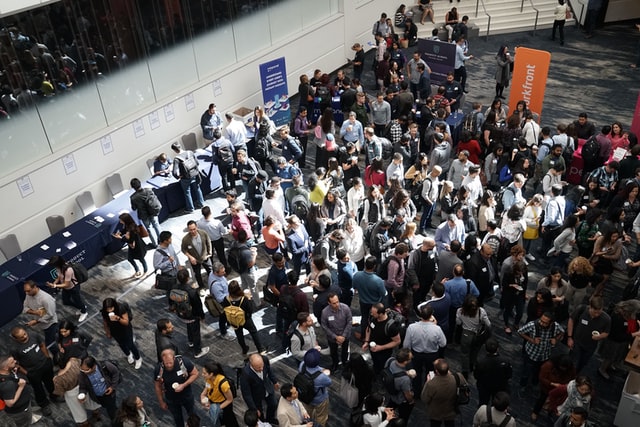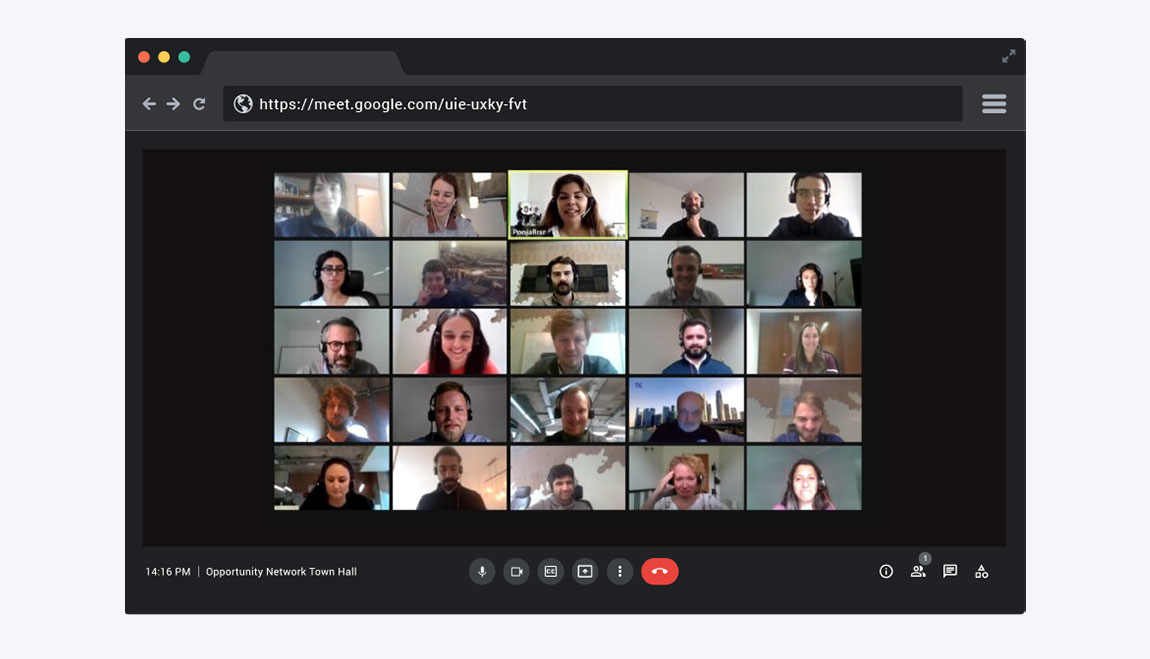Conferences, courses, and conventions have moved into a digital world. Now, to establish relationships of trust within the professional world, you have to participate in online seminars and be actively present on social networks.
Weaving a network of contacts in the work environment has become a determining mission for any professional. A network provides visibility, allows you to meet competitors, establish collaborations with other people and organizations, and create new job and business opportunities. This social activity, known as networking, normally occurs at conventions, conferences, fairs, and meetings. In recent years, it has also spread to the digital world, through social networks such as LinkedIn. The restrictions imposed due to the pandemic have drastically reduced physical contact and networking has become almost entirely digital.
Face-to-face meetings have been replaced by video calls. Handshakes, for contact requests on social networks. And seminars, by webinars. The objective is the same: to generate quality connections that materialize in job opportunities, but the rules are different. Connecting with professionals online requires paying attention to certain aspects. This includes cover letters, access to the appropriate environments, and how to act in digital events.

The importance of ‘networking’
Networking goes far beyond the connection between professionals. It is a strategy determined by what one can contribute to others and how it is presented.
Professional relationships stem from personal relationships. Healthy, fluid, and sensible links bring about other types of connections that can build on them, but not vice versa. Therefore, it is not about maintaining a relationship with other members of the sector, but about generating real and honest links.
Make links from the screen
The leap to digital events has made it difficult to physically be in professional meetings. However, in return, it has allowed meetings to be faster, larger, and more international as travel is not necessary anymore. Virtual meetings make it easier to find areas of specialization that might not be accessible in proximity to you. However, how is it possible to compensate for this lack of physical closeness to build trust? Before starting to establish contacts, it is useful to have a clear understanding of several aspects:
1. Plan before you act
The first thing to do is have a clear plan. You should stop and think about the short and long-term objectives and expectations when establishing a network. It may be that you are looking to expand a business, launch a new company, or take the job market’s pulse to leave your current position. This will filter the profile of the people you plan to network with. Specify if you are looking to find new partners or contact human resources managers directly if you are thinking about changing companies.

2. A cover letter
Social media serves as a cover letter. LinkedIn is still the most suitable platform to contact other professionals, although Viadeo and Sumry also work. All these platforms allow you to outline your CV and share content. These platforms are an extension of your work so they should convey your values. In them, it is necessary to make clear who one is personally and, above all, professionally.
This data will function as a business card. It must be accompanied by a few words when contact is first established through the network or by email. The invitation sent should always be personalized. Ideally, in it, you would define yourself very briefly and explain to the recipient why you are contacting.
3. Find the right environment
In an age in which success is measured by accumulation, such as the number of “likes” received on a network, the world of professional contacts does not fit with logic. It requires that they be of quality, not quantity.
4. Interact in digital events
Talks and online seminars or webinars, which have proliferated in the wake of the pandemic, are another way to find like-minded professional’s profiles. Although virtual meetings are not as personal as physical meetings, it is now possible to attend far more meetings. This in turn multiplies the opportunities to expand networks internationally.
The screen minimizes the possibility of establishing eye contact with other attendees or chatting with those who would be sitting next to you if it were a physical event. Therefore, it is advisable to participate if the opportunity should arise. For example, it is advisable to connect through networks with the speakers after an event.
5. Do not forget about the physical plane
The physical events, experts say, will return as the global health situation improves. “International events, trade shows, and conferences will return, but probably on a smaller scale than before. That is, if 5,000 people attended before, now there will be 1,000 or 2,000 at the same event in the foreseeable future,” predicts Nizami Namazov, Vice President of Business Development at Opportunity Network.
Experts highlights that the difference in the events will be the use of digital tools to find business partners. There will not be a 100% return to the norm of before. It has been proven that many things can be done online with advantages, such as savings on travel. However, it must be taken into account that over-digitization can be a problem so a balance must be struck between physical and digital networking.

Connected companies
The pandemic is giving way to a new scenario in which hypercompetitiveness between companies shifts towards cooperation for mutual benefit. This transformation has materialized in projects such as #MiTiendaSegura. This brought together large companies in the food sector in Mexico, such as PepsiCo, The Coca-Cola Company, and Kellogg’s, to help small businesses. When you have to adjust resources, but you want to continue with the projects, you must form collaborations.

Experiences, such as those facilitated by startup accelerators that are increasingly oriented towards large corporations, open a path between entrepreneurs with great ideas and organizations with the necessary means to implement said ideas. It also enables the pooling of resources to meet objectives that, separately, would not be viable for either party. As is the case of a company that develops artificial intelligence (AI) technology and another that needs this tool to offer better service.
The health crisis has also caused changes in supply chains. Movement limitations over the past year have led companies to seek alternatives in regions closer to suppliers and regular buyers, sometimes thousands of miles away. In this search, networking plays a fundamental role. “These changes lead to the need to find reliable business partners to buy or sell products and services,” argues Nizami Namazov.
In the current situation, with international events and fairs canceled or postponed and travel restricted, it is not easy to find these partners. “That is why digital tools are crucial to meeting that need, regardless of the size of the organization,” states Namazov. “We have 45,000+ companies from 140+ countries making commercial agreements and we work with leading banks to invite reliable clients to the platform and to grow in international markets,” he adds.
This article was originally published by El Pais newspaper.




